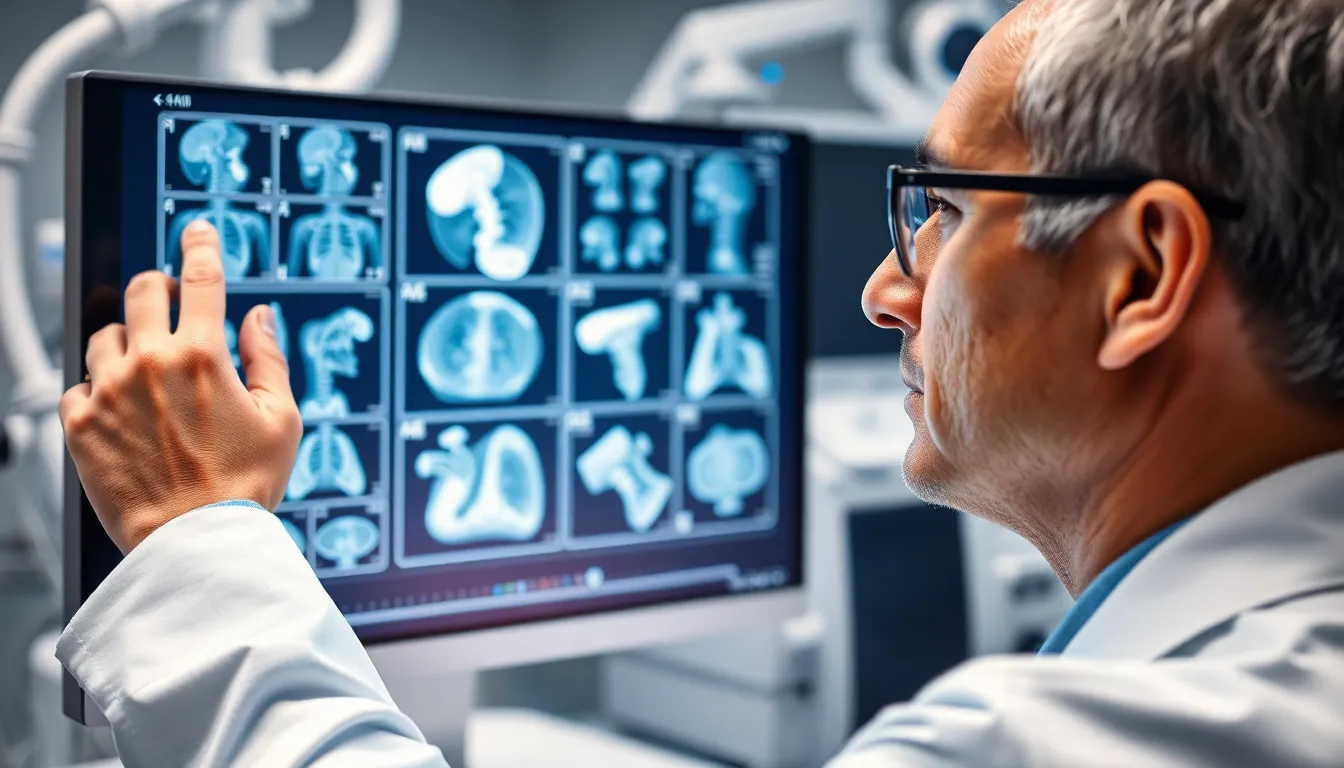In a world where selfies reign supreme and cat videos dominate the internet, visual artificial intelligence is stepping into the spotlight like a tech-savvy superhero. Imagine a future where machines can analyze images faster than a human can say “cheese.” This isn’t just a sci-fi fantasy; it’s happening right now. Visual AI is transforming industries, from healthcare to entertainment, and it’s making life a whole lot easier—or at least more interesting.
Table of Contents
ToggleUnderstanding Visual Artificial Intelligence
Visual artificial intelligence (AI) revolutionizes how machines perceive and interpret images. This technology encompasses a range of applications, transforming industries by improving decision-making processes and enhancing user experiences.
Definition and Scope
Visual AI focuses on processing and understanding visual data through advanced algorithms. It involves techniques such as image recognition, object detection, and video analysis. Applications include medical imaging analysis, automated surveillance systems, and enhanced user interfaces. Industries rely on visual AI to improve operational efficiency, reduce costs, and deliver personalized experiences. The capabilities of visual AI extend beyond simple recognition, enabling cognitive functions that allow computers to learn from visual inputs.
Historical Context
The development of visual AI traces back to the 1960s. Early researchers began exploring machine vision, aiming to replicate human visual perception. Significant advancements occurred through the 1980s and 1990s with the introduction of neural networks and image processing techniques. The advent of deep learning in the 2010s marked a turning point, providing breakthroughs in visual recognition accuracy. Landmark events, such as the ImageNet competition, showcased the potential of deep learning models in image classification tasks. Today, ongoing research fuels further innovation, as visual AI continues to advance and reshape various sectors.
Applications of Visual Artificial Intelligence

Visual artificial intelligence shows transformative potential across multiple sectors, providing advanced tools for various operations. Its applications range from image recognition to video analysis, enhancing efficiency and effectiveness in decision-making processes.
Image Recognition
Image recognition utilizes visual AI to identify objects and patterns within images. This technology plays a crucial role in healthcare, particularly in diagnosing medical conditions through imaging analysis. It can streamline processes by automatically detecting anomalies in X-rays and MRIs. Retail industries leverage image recognition for enhancing customer experiences, enabling personalized recommendations based on visual cues. Furthermore, security systems employ image recognition to improve surveillance efforts, identifying unusual behavior in real-time. With accuracy rates exceeding 95% in controlled environments, the impact of image recognition continues to grow, reshaping industries.
Video Analysis
Video analysis harnesses the capabilities of visual AI to interpret motion and behavior in video footage. This application finds utility in security, where it can identify threats through real-time monitoring. Traffic management systems utilize video analysis to monitor congestion and optimize traffic flow, leading to improved urban mobility. Sports analytics also benefit from this technology, analyzing player movements to enhance team strategies. Industries such as entertainment use video analysis to curate personalized content based on viewer preferences. With advancements in processing power, video analysis delivers timely insights, significantly enhancing operational efficiency across various sectors.
Technologies Behind Visual Artificial Intelligence
Visual artificial intelligence leverages several advanced technologies to enhance image and video processing capabilities. These technologies play a crucial role in enabling machines to analyze and interpret visual data more effectively.
Deep Learning Algorithms
Deep learning algorithms form the backbone of visual AI. These algorithms enable networks to learn from vast datasets, improving accuracy over time. Convolutional neural networks (CNNs) excel at image processing tasks. They automatically detect features in images, making them ideal for applications like facial recognition and medical imaging. By using layers of neurons to mimic human brain function, these algorithms develop a nuanced understanding of visual content. Continuous improvements in these algorithms drive advancements in various domains, from healthcare diagnostics to autonomous vehicles.
Neural Networks
Neural networks replicate the way human brains process information. They consist of interconnected nodes or neurons that process visual data through multiple layers. Each layer extracts specific features, contributing to the overall understanding of an image. While traditional algorithms rely on predefined features, neural networks learn these features directly from the data. This adaptability leads to improved performance in tasks such as object detection and scene recognition. The architecture of neural networks also includes variations like recurrent neural networks (RNNs), which handle sequential data, further expanding their application in video analysis and real-time processing.
Challenges in Visual Artificial Intelligence
Visual artificial intelligence operates in a complex landscape, facing various challenges that impact its effectiveness and acceptance. Two significant issues include data privacy concerns and ethical implications.
Data Privacy Concerns
Data privacy concerns arise as visual AI systems process vast amounts of personal data, including images and videos. Users often express worries about how this data is collected, stored, and used. Compliance with regulations like the General Data Protection Regulation (GDPR) becomes critical for developers and organizations. Securing consent before data utilization is essential for maintaining trust with users. Failure to address these privacy issues can lead to negative public perceptions and potential legal ramifications.
Ethical Implications
Ethical implications of visual AI influence its deployment across industries. Algorithms can inadvertently reflect biases present in training datasets, leading to unfair treatment of certain groups. These biases can manifest in applications such as facial recognition, where accuracy may vary significantly among different demographics. Developers must prioritize fairness while creating AI models and strive for transparency in how decisions are made. Addressing ethical concerns ensures that visual AI serves society positively and equitably.
Visual artificial intelligence is reshaping how industries operate and interact with technology. Its ability to analyze images and videos quickly and accurately is driving innovation across sectors like healthcare and entertainment. As visual AI continues to evolve, it promises to enhance user experiences and streamline processes.
However, the technology also brings forth challenges that must be addressed. Ensuring data privacy and ethical use is crucial for its responsible implementation. By prioritizing fairness and transparency, visual AI can truly benefit society, making it a powerful tool for the future. As advancements continue, the potential for visual AI remains boundless, paving the way for smarter solutions in everyday life.

